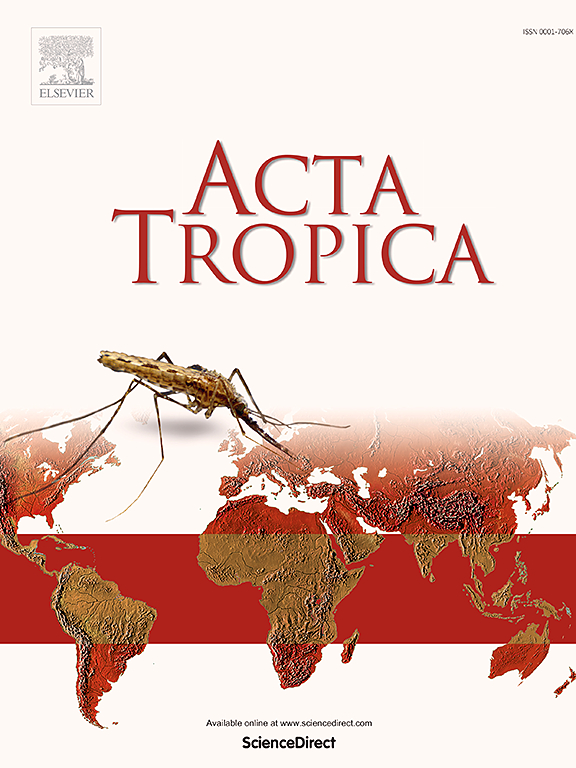气候变化情景下马格里布地区皮肤利什曼病时空模拟(2021-2100)
IF 2.1
3区 医学
Q2 PARASITOLOGY
引用次数: 0
摘要
气候变化对全球公共卫生提出了重大挑战,特别是关于媒介传播的疾病,如皮肤利什曼病。本研究旨在探讨气候变化对北非CL分布的影响,重点是阿尔及利亚、突尼斯和摩洛哥。方法:分析2000 ~ 2020年的流行病学和气候资料,采用广义加性模型评估温度、相对湿度、风速和降水等气候变量对CL发病率的影响。此外,利用RCP 2.6情景下协调区域气候降尺度试验(CORDEX)的气候预估数据对2021 - 2100年未来CL的发病率进行了预测。结果:研究结果表明,由于气温上升和降水模式变化,地中海沿岸地区,特别是突尼斯东部、阿尔及利亚和摩洛哥部分地区的CL病例可能有所增加。分析显示,三个国家CL发病率的时间峰值各不相同:阿尔及利亚为短期(2025年),摩洛哥为中期(2065年),突尼斯为长期(2085年)。结论:本研究强调需要建立针对特定区域的监测和应对系统,并强调将气候预测纳入公共卫生战略的重要性,以减轻北非气候条件变化下CL传播的风险。本文章由计算机程序翻译,如有差异,请以英文原文为准。

Spatio-temporal modeling of Cutaneous Leishmaniasis under climate change scenarios in the Maghreb region (2021–2100)
Introduction
Climate change presents a significant challenge to global public health, especially regarding vector-borne diseases such as cutaneous leishmaniasis. This study aims to investigate the impact of climate change on the distribution of CL in North Africa, with a focus on Algeria, Tunisia, and Morocco.
Methods
We analyzed historical epidemiological and climatic data from 2000 to 2020 and employed a Generalized Additive Model to assess the influence of climatic variables including temperature, relative humidity, wind speed, and precipitation on CL incidence. Additionally, climate projection data from the Coordinated Regional Climate Downscaling Experiment (CORDEX) under the RCP 2.6 scenario were utilized to predict future CL incidence from 2021 to 2100.
Results
The findings indicate an increase in CL cases in Mediterranean coastal areas, particularly in eastern Tunisia, Algeria, and parts of Morocco, due to rising temperatures and shifting precipitation patterns. The analysis revealed varying temporal peaks in CL incidence across the three countries: short-term for Algeria (2025), mid-term for Morocco (2065), and long-term for Tunisia (2085).
Conclusions
This study underscores the need for region-specific surveillance and response systems and emphasizes the importance of integrating climate forecasts into public health strategies to mitigate the risks of CL spread under changing climatic conditions in North Africa.
求助全文
通过发布文献求助,成功后即可免费获取论文全文。
去求助
来源期刊

Acta tropica
医学-寄生虫学
CiteScore
5.40
自引率
11.10%
发文量
383
审稿时长
37 days
期刊介绍:
Acta Tropica, is an international journal on infectious diseases that covers public health sciences and biomedical research with particular emphasis on topics relevant to human and animal health in the tropics and the subtropics.
 求助内容:
求助内容: 应助结果提醒方式:
应助结果提醒方式:


